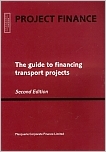| |||||
• polskie
• Zamów informacje o nowościach z wybranego tematu • kontakt |
EUROMONEY GUIDE TO FINANCING TRANSPORT PROJECTSMACQUARIE CORPORATE FINANCE LIMITEDwydawnictwo: EUROMONEY, 2000, wydanie IIcena netto: The Guide to Financing Transport Project Since the publication in 1996 of the first edition of Project Finance - the guide to financing transport projects by Macquarie Corporate Finance, governments worldwide have continued to promote the development of transport infrastructure by the private sector. This has taken many forms - from fully privately owned and funded projects and privatisations to build-own-operate-transfer (BOOT) structures and private-public partnerships. Over the past few years there have been many successes in the area of privately provided transportation, including the opening of the M2 Motorway in Sydney, Australia, the public listing of Transurban, the company which owns and will operate the Melbourne City Link toll road, the completion of the first phase of the privatisation of Australian airports and the opening of Chep Lap Kok airport and its associated infrastructure in Hong Kong. Governments in countries as diverse as China, Israel, South Africa and Hungary have embraced the private sector provision of toll roads. However, there have also been some spectacular failures, many sparked by the Asian financial crisis which began in 1997, escalated in 1998 and continued in 1999. Hopewell's giant Bangkok Elevated Road and Train project ground to a halt, even though construction was under way. Many other projects are having difficulty in maintaining their debt servicing requirements. Of the many transport projects which were under way or being considered in Asia, many have been delayed or cancelled. Seeking out attractive investments in the transport sector in many developing economies is now more challenging than ever. Despite these failures the market for the private provision of transport infrastructure is growing and maturing. Both governments and private sponsors are becoming more sophisticated in the way they deal with each other and analyse projects, including the way they deal with actual or potential project risks. The recent Asian financial crisis has only served to highlight risks which have always existed in BOOT projects in all economies, not just those which are developing. It is now even more important for organisations undertaking private transport infrastructure projects to have a good understanding of how the project will operate and how the financing for the project relates to its characteristics. Steps may then be taken to mitigate risks wherever possible so that the best financing terms may be obtained and consumers can receive transport services for the lowest price. The second edition of this book has been updated and expanded to provide the best possible reference for those seeking to finance transport projects. New sections have been added on the risks specific to developing economies and steps that can be taken to mitigate these risks. The case studies section has been updated and expanded and now provides an analysis of the differences between same-sector projects in different jurisdictions, and why certain options have been followed in the financing of these projects. New techniques for financing transport projects, such as leasing and securitisation have been discussed and elaborated upon and a glossary section has been added to explain some of the less common terms used in financing projects in the transport sector. The second edition of The guide to financing transport projects by Macquarie Corporate Finance is now, more than ever, an essential companion for those seeking to b'ecome active in this area. The guide is essential reading for those seeking to enhance their knowledge of the cutting edge financing techniques that are being used to push the boundaries of finance-able projects, and to ensure that the prices charged to consumers are as low as possible. 94 pages
Po otrzymaniu zamówienia poinformujemy pocztą e-mail lub telefonicznie, |


